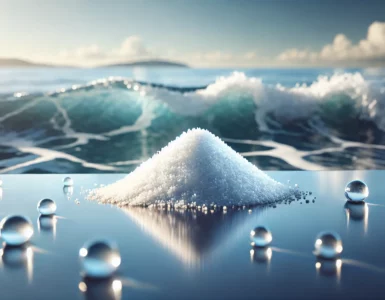Triton Core7 is a 3-part reef dosing system providing alkalinity, calcium, magnesium, and trace elements. However, Triton does not disclose the actual concentrations of these solutions, instead pushing users toward their ICP tests and proprietary dosing recommendations. This approach forces reliance on their ecosystem and lacks transparency. With this calculator, you can determine how much of each solution to dose based on your own testing, giving you control over your reef’s parameters.
Triton Core7 Dosing Calculator
The Triton Core7 Solutions
Component 1 – Magnesium + Macro Elements + Trace Elements
Component 2 – Calcium + Trace Elements
Component 3a – Alkalinity
Component 3b – Alkalinity
The prescribed “balanced” dose is 1:1:1:1, but since 3a and 3b are identical, the effective balanced dosage is 1:1:2.
This dosing assumes that if your alkalinity, calcium, and magnesium are in balance, then simply dosing as directed will keep them balanced. For the most part, this is true. However, consumption rates are rarely perfectly balanced, so some drift is inevitable.
Triton recommends consulting their ICP tests to detect imbalances and suggests purchasing their standalone alkalinity, calcium, and magnesium buffers to correct them. While they provide calculators for those buffers, what they do not provide is a calculator to determine how much of the Core 7 solutions you already own should be used to make adjustments. Doing so would reveal the actual concentrations of each of the (3) parts and negate the need to buy their individual buffers.
Fortunately, we can back into the concentrations of each solution using their “balanced” dosing instructions and assuming they are designed to replace typical consumption aligned closely with the chemistry of natural seawater (NSW).
Ionic Balance of Natural Sea Water
- Alkalinity: ~7 dKH
- Calcium: ~420 ppm
- Magnesium: ~1280 ppm
We know that for every 2.8 dKH of alkalinity, there are approximately:
- 60 ppm magnesium
- 20 ppm calcium
Uptake of Ions by Calcification
HUptake does not match Ionic Balance. Many variables come into play so assumptions must be made when discussing a “balanced” dosing system. Under *normal circumstances of coral calcification we assume that for every dKH of alkalinity consumed:
- ~7.12 ppm of calcium is consumed
- ~1 ppm of magnesium is consumed
*Incorporation ratios of Magnesium and Calcium can vary. Magnesium can range from .5 ppm to 2 ppm of Calcium. Likewise calcium update is not fixed directrly to alkalinity usage. So the numbers provided are generally accepted values based on a general mixed reef. Macroalgaes can consume far more Magnesium than Calcium. And Coralline Algae can also skew consumption ratios. We use 1 ppm of Magnesium per 7 ppm of Calcium per dKH depleted as a general rule. Each system can vary.
Concentration Mathematics
Step 1: Alkalinity (Known)
The alkalinity solution is *known to be 9,748.5 dKH·L/L
*Source: Triton Core7 calculator (enter 100 L, −1 dKH ⇒ 5.13 mL dose each solution; 3A+3B = 10.26 mL).
Step 2: Calcium Solution Concentration
To calculate the calcium solution concentration:
- For every 2 mL of alkalinity, you dose 1 mL of calcium solution.
- Since coral uptake is ~7.1 ppm Ca per 1 dKH consumed, we can scale this against the alkalinity rise delivered by the matched Alk dose.
- The alkalinity increase from 2 mL is:
- \(9.75 \, \text{dKH/mL} \times 2 = 19.5 \, \text{dKH} \)
- The calcium required for 19.5 dKH is:
- \(19.5 \, \text{dKH} \times 7.2 \, \text{ppm} = 138.84 \, \text{ppm calcium}\)
- The actual calcium solution concentration is therefore:
- \(\text{Calcium Concentration} = 138.84 \, \text{mg/mL} = 138,840 \, \text{mg/L (ppm)} \) in the stock solution.
Step 3: Magnesium Solution Concentration
To calculate the magnesium solution concentration:
- For every 2 mL of alkalinity, you dose 1 mL of magnesium solution
- The alkalinity increase from 2 mL is:
- \(9.75 \, \text{dKH/mL} \times 2 = 19.5 \, \text{dKH}\)
- The magnesium required for 19.5 dKH (using uptake of 1 ppm Mg per 1 dKH) is:
- \(19.5 \, \text{dKH} \times \frac{1 \, \text{ppm}}{1 \, \text{dKH}} = 19.5 \, \text{ppm magnesium}\)
- The actual magnesium solution concentration is therefore:
- \( \text{Magnesium Concentration} = 19.5 \, \text{mg/mL} = 19{,}500 \, \text{mg/L (ppm)}\) in the stock solution.
Triton Core 7 Calculator Accuracy
This calculator should provide a fairly close approximation of required dosing, based on the known concentration of the alkalinity solution and Triton’s claim that Core7 is a “balanced” system, where the balance is likely the 1:1:7 ratio (Ca:Mg:Alk) ratio listed above. While there is some debate over what constitutes “balanced” dosing, this approach provides a solid starting point.
Unfortunately Triton has not disclosed the precise concentrations of calcium and magnesium in their solutions, so this calculator is based on educated guesses and may differ from Triton’s proprietary formulations. Use this calculator as a general guide, not a definitive tool. The responsibility for dosing remains with the user.






Add comment